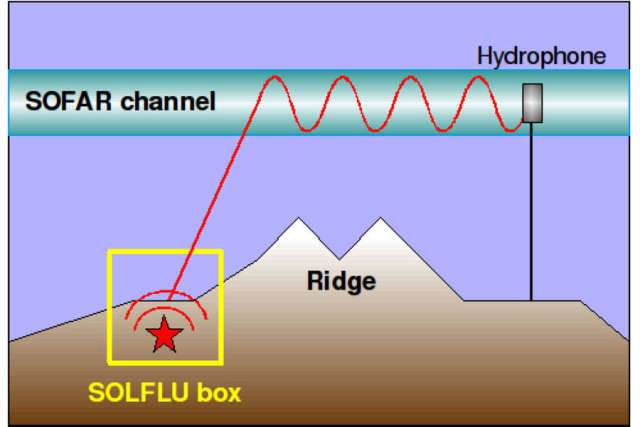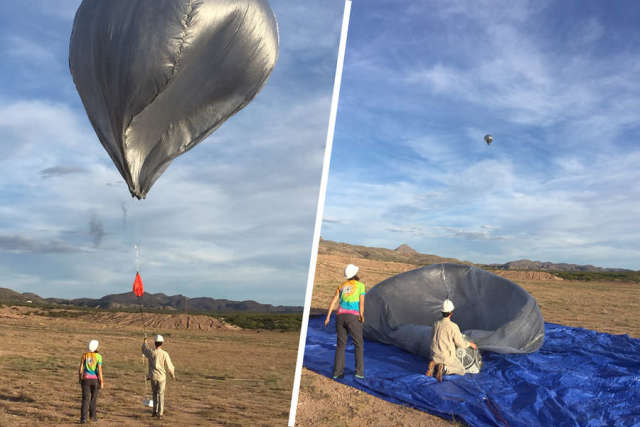American geophysicists have discovered a channel in the atmosphere that transmits sounds for hundreds of kilometers
Waveguides allow you to transmit sound (or light) for a great distance, enclosing them as if in a narrow corridor. One of these waveguides was recently discovered by American researchers after hearing an infrasound from a rocket hundreds of kilometers away from launch. At the Institute of Atmospheric Physics of the Russian Academy of Sciences "Newspaper.Ru" stated that this phenomenon has long been predicted theoretically and its practical benefits are not very great.
The microphone on the balloon was able to hear the sound of a rocket launch 400 kilometers away. This is reported by the journal Science.
In the 1940s, geophysicist Maurice Ewing discovered an underwater sound channel in the world ocean, thanks to which sound can propagate over extremely long distances. Sailors use it to monitor submarines, and humpback whales talk to their relatives at distances of thousands of kilometers.
It is formed due to the fact that the speed of sound in the ocean primarily depends on two factors - temperature and pressure. The temperature decreases with depth along with the speed of sound, but below a certain level it reaches a plateau and remains stable. Below this plateau, the pressure continues to rise and increase the speed of sound. Thus, there is a zone of the minimum speed of sound, above and below which the speed increases. Therefore, if an acoustic beam goes up from inside this zone from an explosion at a certain angle, it will bend down due to refraction and, eventually, turn to the bottom. Since the speed of sound also increases below the minimum level, the beam will turn back up for the same reason, and so cyclically many times. This is how an ocean waveguide is formed.

Image Source: HAL and Open Science
Ewing devoted further work to finding a similar channel in the tropopause zone, the boundary between the atmosphere and the stratosphere, located at an altitude of about 17 kilometers. The US military hoped to use this channel to eavesdrop on Soviet nuclear tests, and therefore the Mogul project was launched, in which balloons with infrasound microphones were launched into the sky. One of them crashed near Roswell in New Mexico in 1947 and gave rise to one of the most famous conspiracy theories about UFOs. Soon the project was closed due to unsatisfactory results.
These days, Sarah Albert, a geophysicist at Sandia National Laboratories in New Mexico, has decided to re-test balloons for recording infrasound, already equipped with solar panels and a wireless data transmission system. Scientists were motivated by the fact that computer models consistently showed the formation of sound channels at altitudes from 10 to 40 kilometers.
Albert launched one of the balloons on April 14, 2021, and the initiative was crowned with success: the team managed to hear the sound of Blue Origin's New Shepard rocket. The rocket was launched about 400 kilometers from the balloon, and on the recording, scientists saw three clear signals: at launch, when ascending through the tropopause and when descending through it. According to Albert, this is the first observation of such a remote infrasound source using a receiver on board an aircraft.
To the surprise of scientists, there were other sounds on the recording. "Infrasound phenomena of unknown nature occur several times an hour, and there is no good explanation for them," said one of the study participants.
In particular, this is due to the fact that the atmosphere is much less stable than the ocean, it is affected by temperature changes, wind changes. And indeed: when a team of scientists tried to repeat the success in September 2021 and hear the space launch at Vandenberg Air Base, they failed. Perhaps this is due to the fact that the balloon was removed from the rocket by 1300 kilometers.
In the future, the researchers plan to listen to space launches using several balloons staggered at different heights to find out where the effect is strongest. In addition, they are interested in the nature of unusual infrasound noises. So far, the authors suggest that they are produced by bolides falling from space or the northern lights.
"Researchers from America write that for a long time they believed in the existence of such a waveguide in the atmosphere and finally found it… Although it is well known that there are many regions of sound velocity minima in the atmosphere. That is, there are many waveguides similar to an oceanic waveguide in the atmosphere. Note that such waveguides are effectively manifested only if the sound source and receiver are located on the waveguide axis - the horizon of the minimum speed of sound," says Gazeta.Ru" Sergey Kulichkov, Doctor of Physical and Mathematical Sciences, Head of the Obukhov Institute of Atmospheric Physics of the Russian Academy of Sciences.
In total, Kulichkov notes, there are three different types of waveguides in the atmosphere, and the one described by American scientists is not the most useful of them. For example, with the help of another type of waveguide, whose upper boundary is at an altitude of 100 kilometers, at the end of the XIX century, the sound of distant volcanoes was recorded and the existence of the stratosphere was discovered.
Vasily Zaitsev

